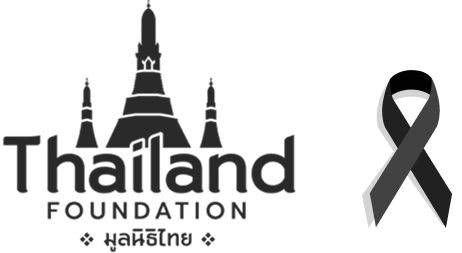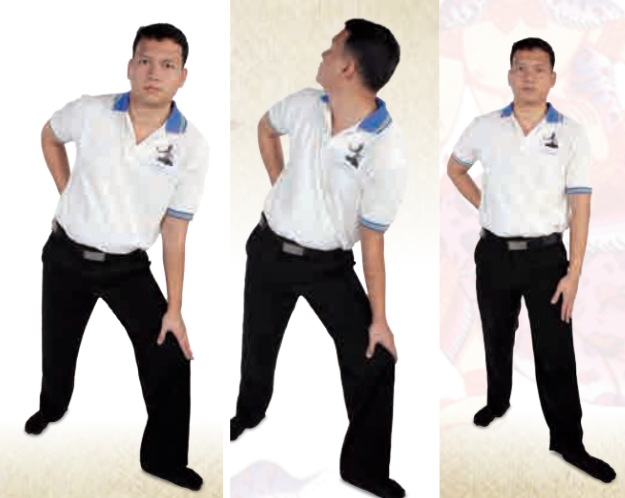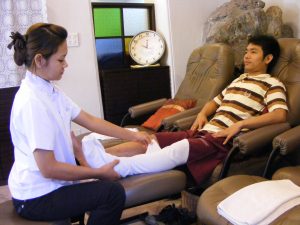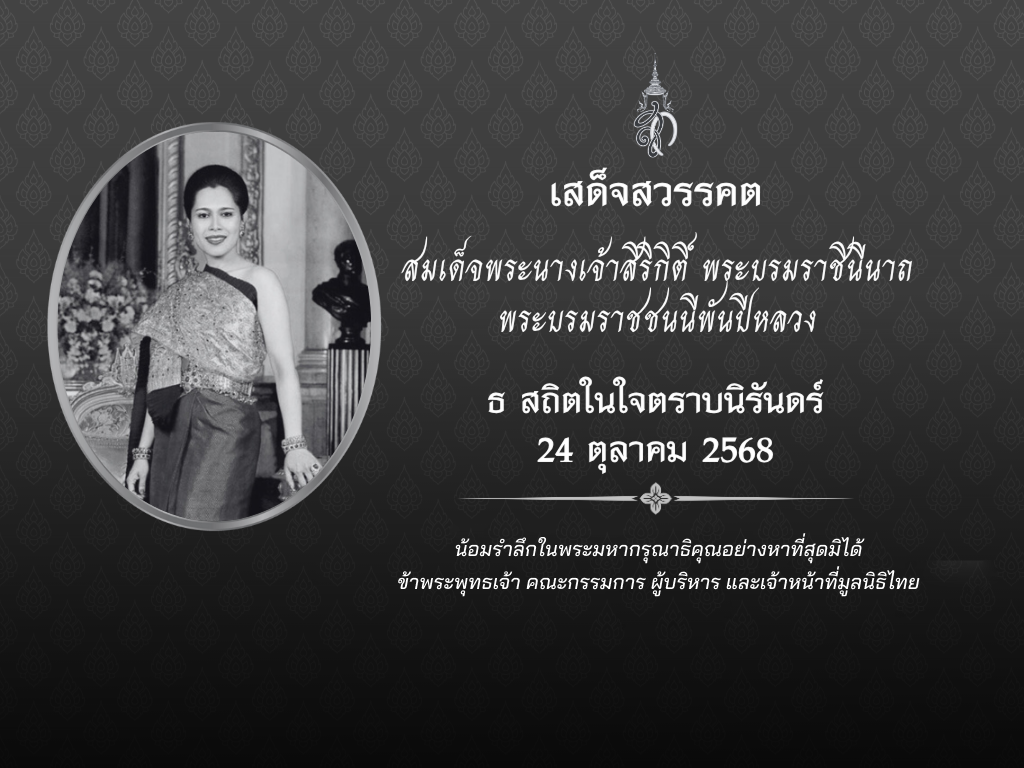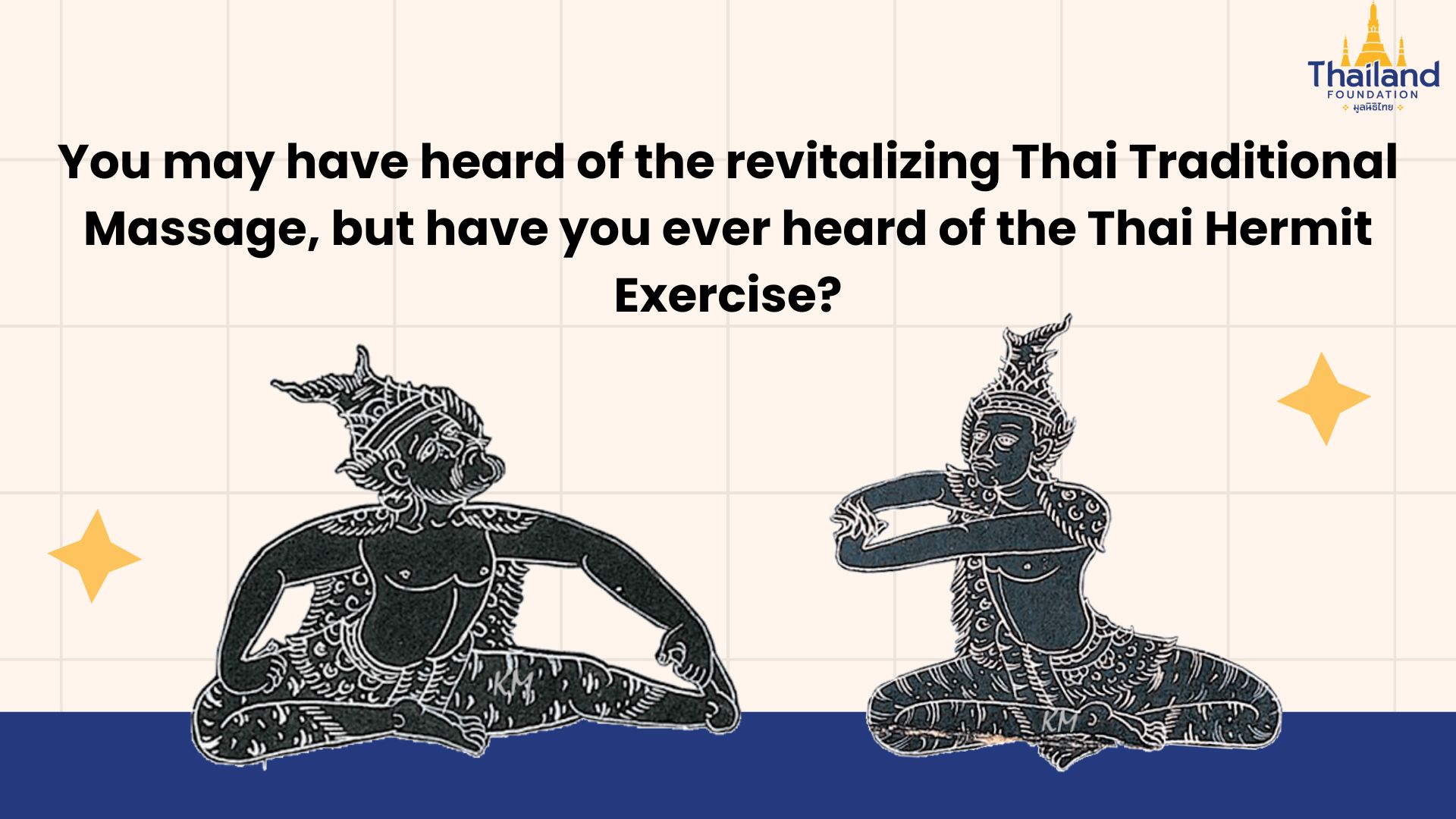
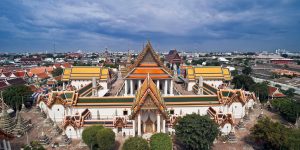 Wat Pho (Wat Phra Chetuphon Wimon Mangkhalaram Rajwaramahawihan)
Wat Pho (Wat Phra Chetuphon Wimon Mangkhalaram Rajwaramahawihan)
Cr. watpho
If you have seen photographs of Wat Pho (also known as the Temple of the Reclining Buddha, or by the official Thai name, Wat Phra Chetuphon Wimon Mangkhalaram Rajwaramahawihan), you may have caught a glimpse of statues of hermits in various stretching poses. These statues represent the hermit or ascetic tradition in Thai culture, embodying the practices of meditation, movement, and traditional medicine. The Thai Hermit Exercise, also known as “Reusi Dat Ton” (ฤาษีดัดตน), is deeply rooted in the country’s traditional healing practices, which are, in turn, influenced by Buddhist and Ayurvedic principles. It is a traditional exercise system that incorporates stretching, breathing techniques, meditation, and self-massage.
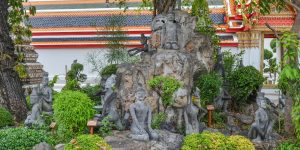
The statues of hermits in various stretching poses, located at Wat Pho
Cr .watpho
Thai Traditional Medicine as a whole is deeply influenced by ancient Indian spirituality and medicinal practices. However, according to the Department of Thai Traditional and Alternative Medicine, the techniques of Reusi Dat Ton appear to be different from yogic movements and seem to have been rooted more in local innovations. Thai Hermit Exercise incorporates specific stretching, massage, and meditation techniques tailored to balance the body’s energy flow, while yoga encompasses a broader range of practices with diverse styles and approaches. While both promote holistic well-being, yoga often places greater emphasis on spiritual development and self-realization, while the Thai Hermit Exercise focuses more on physical health and energy balance.
Historical Context and Origins
One way to view Traditional Thai medicine is through its areas of practice, which may include: (1) Physical practices, such as the Thai Hermit Exercise or Thai massage, where a therapist treats patients using knowledge of circulation and pressure points; (2) medical sciences, involving the study of diseases; (3) pharmaceutical sciences, using local herbs to treat ailments; and (4) spiritual well-being, improving the emotional and mental state of the patients. When one views the Thai Hermit Exercise as a part of the more holistic approach of traditional Thai medicine, it perhaps becomes easier to appreciate the holistic nature of this ancient practice.
The Thai Hermit Exercise traces its origins back to ancient hermits, known as “reusi” (ฤาษี), who lived in the forests and mountains of Thailand. The tradition of asceticism in Thailand was greatly influenced by Hindu-Brahman traditions. The term “reusi” comes from the Hindu term “rishi” which is used to refer to a spiritually accomplished person. The ancient reusi of Thailand dedicated their lives to spiritual practice, meditation, and the study of natural healing methods. It is believed that they developed a series of exercises and techniques to maintain their health, flexibility, and vitality, allowing them to endure long periods of meditation and solitude.
The hermits’ exercises were later integrated into traditional Thai medicine and became an essential part of Thai culture. They were practiced by monks, warriors, and laypeople alike, serving as a means to promote physical and mental well-being.
Principles and Philosophy
Several key principles are reflected in the practice of Thai Hermit Exercise:
- Balance and Harmony: The exercises aim to balance the body’s energy flow, aligning with the concept of “sen” (เส้น) lines—energy channels similar to the meridians in Chinese medicine. Maintaining the flow of energy is believed to be essential to health and vitality.
- Holistic Approach: The practice addresses the body, mind, and spirit. It combines physical movements, breathing exercises, and meditation to promote overall well-being.
- Accessibility: Unlike some other forms of exercise that require advanced flexibility or strength, the Thai Hermit Exercise is designed to be accessible to people of all ages and fitness levels. The movements are gentle and can be adapted to individual needs.
- Breathwork: Similar to yoga, the Thai Hermit Exercise includes various breath control techniques. These may include alternate nostril breathing, breath retention, and breath awareness practices aimed at balancing the flow of energy and calming the mind. Practitioners coordinate inhalations and exhalations with specific movements to enhance the flow of energy throughout the body.
- Physical Movement: The Thai Hermit Exercise emphasizes self-massage techniques aimed at stimulating acupressure points, releasing tension, and promoting circulation. Some Reusi Dat Ton exercises focus on balance, coordination, and proprioception. Practitioners may perform standing poses or dynamic movements that challenge stability and spatial awareness, enhancing overall physical control and mindfulness.
Repertoire and Poses
The Thai Hermit Exercise comprises over 120 poses, encompassing walking, sitting, prone, and standing positions. Ranging from basic to advanced, these should be practiced under certified guidance. The Thai Ministry of Public Health recommends only 15 poses for independent practice. Examples include:
Facial Massage Exercises (Pose 1): Focus on massaging facial acupressure points to enhance circulation, relieve tension, and promote relaxation.
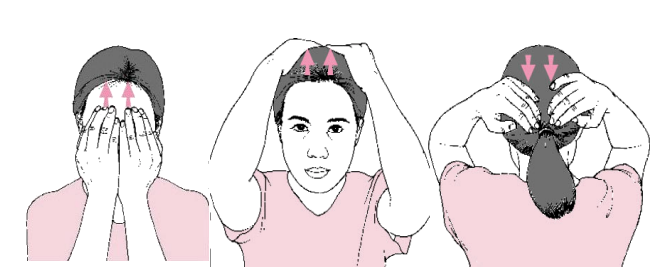
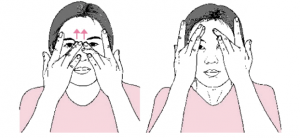
Cr. health.spr.go.th
Leg & Shin Massage (Pose 6): Resembling a forward fold in yoga, extend both legs forward and massage from thighs to ankles for 10-15 repetitions.
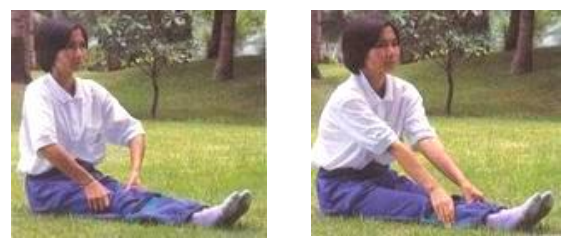
Cr. health.spr.go.th
“Model Pose” (Pose 10): Stand with feet hip-distance apart, lean to place left hand on left thigh, right hand on right waist. Lean further left, twist chest upward right. Repeat on the opposite side.
Cr. lamphuncity
Benefits of the Thai Hermit Exercise
The Thai Hermit Exercises reflect a deep respect for nature and ancient values by focusing on mind-body harmony. The slow and mindful movements with a focus on breath and alignment aim to bring the body back to its natural rhythm, promoting inner peace and physical well-being. The harmony that the Thai Hermit Exercises creates harkens to its roots in Buddhism and ancient traditions. The propagation of these practices in Thailand demonstrates a long-standing tradition of compassion through sharing knowledge, highlighting how these ancient values remain integral to Thai culture.
The Thai Hermit Exercise offers numerous benefits for both body and mind:
- Physical Health:
-
- Improved Flexibility: Regular practice helps to increase the range of motion in the joints and lengthen the muscles.
- Enhanced Circulation: Stretching and self-massage improve blood flow and lymphatic drainage, promoting overall health and vitality.
- Pain Relief: The exercises can alleviate chronic pain, including back pain, headaches, and joint pain.
- Better Posture: The movements encourage proper alignment and posture, reducing strain on the body.
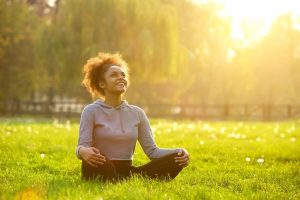
Cr. cosmeticsdesign
- Mental and Emotional Health:
-
- Stress Reduction: The combination of physical exercise, breathing, and meditation induces a state of deep relaxation, helping to reduce stress and anxiety.
- Emotional Balance: The holistic approach can help balance emotions and improve overall mental well-being.
- Increased Mindfulness: The meditative aspect of the practice encourages mindfulness, helping individuals to become more aware of their bodies and their current state of health.

Cr. inc.com
Modern Adaptations and Global Popularity
In recent years, the Thai Hermit Exercise has gained popularity worldwide as part of the broader interest in holistic health and wellness. Many practitioners appreciate its gentle, accessible nature and its focus on both physical and mental well-being. Classes and workshops are now available in many countries, often taught by certified instructors who have studied the traditional methods in Thailand.
Adaptations: Modern instructors often incorporate elements from other disciplines, such as Tai Chi, Qi Gong, and modern yoga, to create a more comprehensive practice that meets the needs of contemporary practitioners. Despite these adaptations, the core principles and techniques of the Thai Hermit Exercise remain intact.
Training and Certification
Becoming a certified instructor in the Thai Hermit Exercise requires comprehensive training. In Thailand, several institutions offer certification programs that cover the theory and practice of the exercises, anatomy, physiology, and the underlying principles of traditional Thai medicine.
In Thailand, you can obtain certification for Thai Hermit Exercise at reputable institutions like Wat Pho Traditional Medical School in Bangkok and the Thai Traditional Medicine Association (TTMA). These institutions offer comprehensive training programs that cover the principles and practices of Reusi Dat Ton, ensuring high-quality instruction and certification for practitioners and instructors.
Training progran at Wat Pho Traditional Medical School
Cr. watpomassage
Conclusion
The Thai Hermit Exercise is a testament to the enduring wisdom of ancient Thai medicinal practices. It offers a holistic approach to health and wellness, addressing the body, mind, and spirit through a combination of stretching, breathing, self-massage, and meditation. As the practice continues to gain global recognition, it provides a valuable tool for modern individuals seeking to enhance their well-being in a balanced and accessible way.
By embracing the Thai Hermit Exercise, practitioners can tap into a rich tradition of self-care and healing that has stood the test of time. Whether you are looking to improve physical health, reduce stress, or cultivate mindfulness, the Thai Hermit Exercise offers a pathway to greater harmony and vitality.
The story of the “Thai Hermit Exercise” is an aspect of Thai local wisdoms. This practice is rooted in Thailand’s ancestral knowledge, which has been carried on and improved upon through countless generations. Even today, its holistic and accessible approach proves beneficial to practitioners from all corners of the world. Join us in exploring more stories of Thailand and the Thai people, as we take you on a journey to discover Thainess.
Sources:
- http://book.culture.go.th/newbook/ich/dcp2/files/mobile/index.html#54
- https://www.stou.ac.th/Schools/Shs/booklet/2_2550/Planthai.htm
- https://lamphuncity.go.th/wp-content/uploads/2022/04/%E0%B8%A4%E0%B8%B2%E0%B8%A9%E0%B8%B5%E0%B8%94%E0%B8%B1%E0%B8%94%E0%B8%95%E0%B8%9915%E0%B8%97%E0%B9%88%E0%B8%B2.pdf
- https://thailandfoundation.or.th/culture_heritage/nuad-thai-thai-massage-a-unesco-intangible-cultural-heritage/
Author: Thammika Songkeao
Editor: Tayud Mongkolrat
